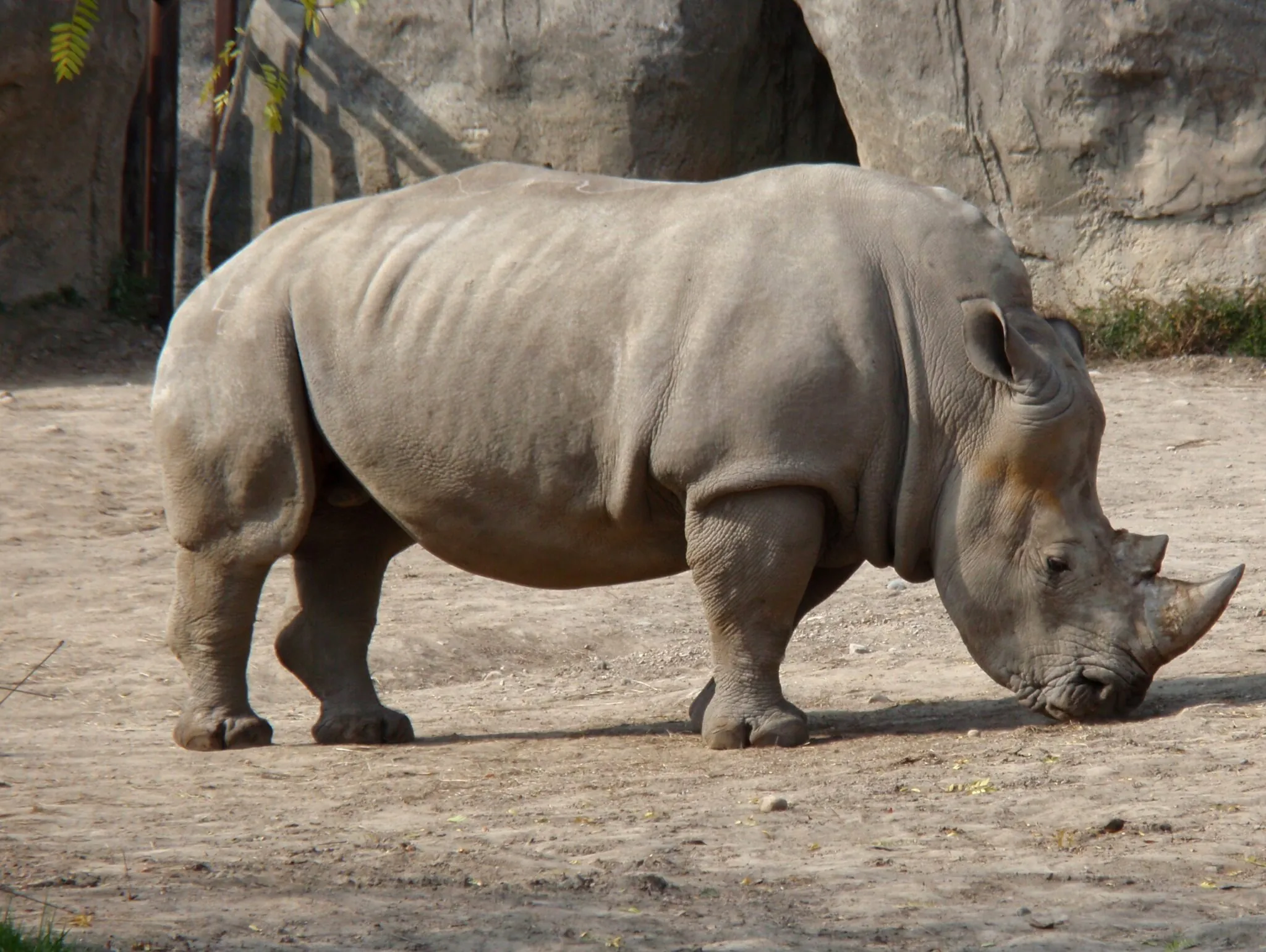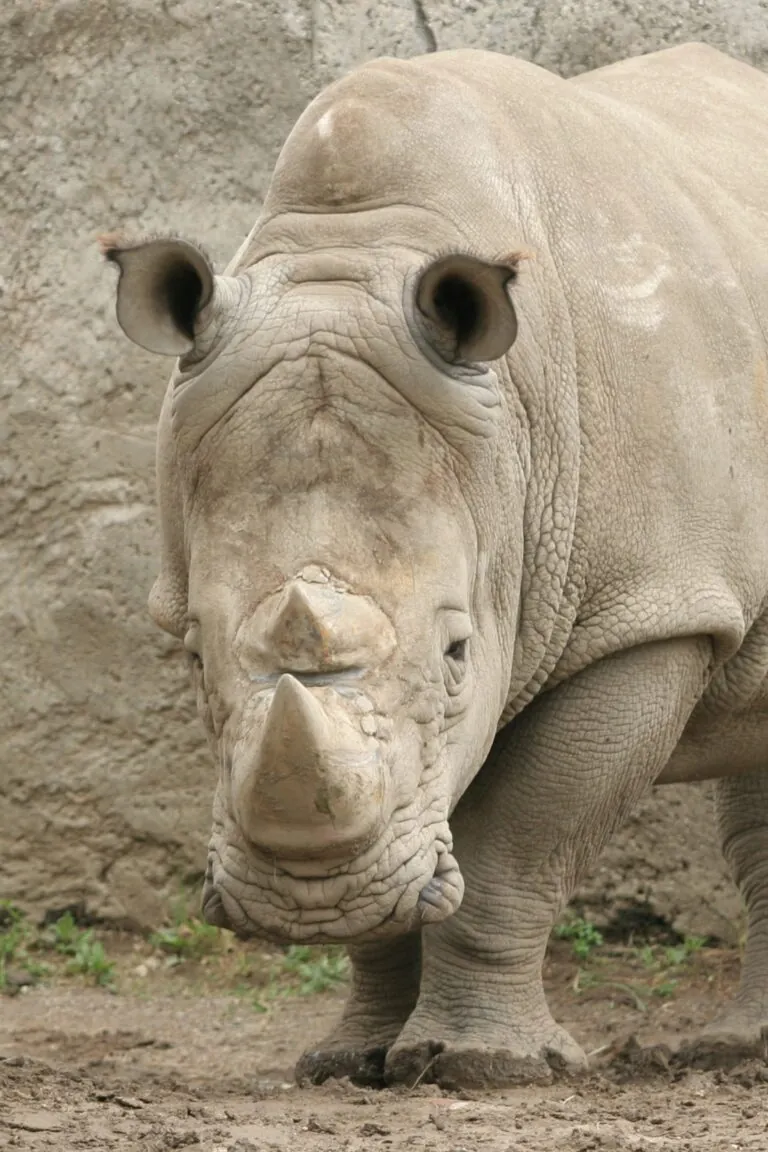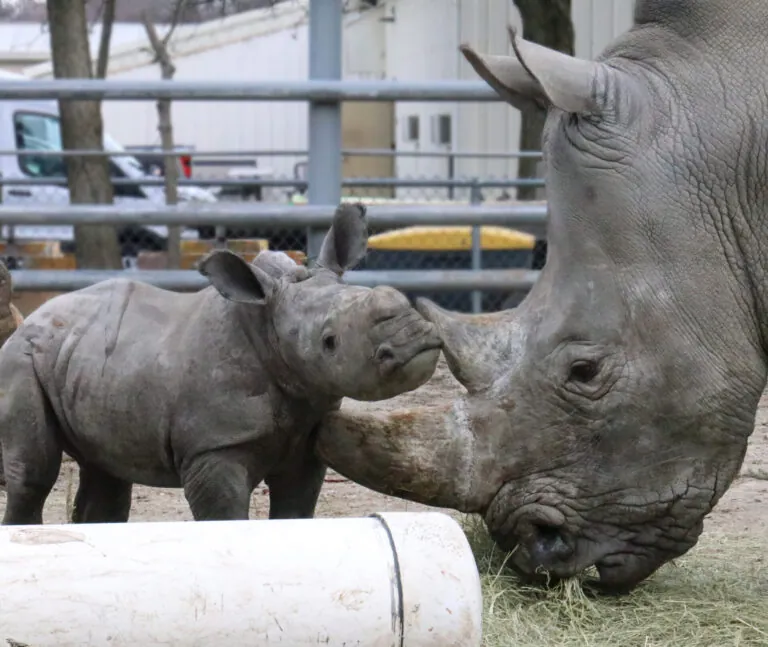-
Menu
- Plan Your Visit
- Meet The Animals
- Check Out Events
- Memberships
- New in 2025 - Giant Tortoise
- Christmas at the Zoo
- About The Zoo
- Support the Zoo
- Conservation
- Education
- Groups & Private Events
- Zoo News
- Contact
- Zoo Store
- Indianapolis Prize
- Global Center for Species Survival
- Schedule
- Donate
- Membership
- Tickets

- Plan Your Visit
- Meet The Animals
- Check Out Events
- Memberships
- New in 2025 - Giant Tortoise
- Christmas at the Zoo
- About The Zoo
- Support the Zoo
- Conservation
- Education
- Groups & Private Events
- Zoo News
- Contact
- Zoo Store
- Indianapolis Prize
- Global Center for Species Survival

Southern White Rhinoceros
Ceratotherium simum simum
About
White rhinos are actually grey—even more so when they wallow in soothing mud that keeps their skin free of insects and cool on a hot day. Other names for them are “grass rhino,” for their savanna diet, and “square-lipped rhino,” for their large, wide mouth. (An Afrikaans word, “weit,” means “wide” but sounds like “white,” which may be one way that white rhinos got their name.) They spend their days grazing short grasses in areas near water. They help maintain the biodiversity of plants in their habitats and prevent wildfires.
Females tend to live in small groups with their young. New babies are born after a 16-month gestation. Calves weigh more than 100 pounds at birth, and they are hornless for the first 6 weeks. They are cared for closely by their mothers for up to 3 years.
Males are more solitary and patrol large territories, which they mark with dung piles and other scents. Rhinos also communicate with vocalizations—and they respond to the alarm calls of oxpecker birds who ride on their backs, eating ticks off their skin! Rhinos are related to horses and tapirs—and they’re fast runners, with a top speed of 25 miles per hour for short bursts if threatened.

Conservation
White rhinos face ongoing threats from poaching for their horns. There are only two female northern white rhinos left in Africa. Conservationists are now working hard to protect the southern white rhino and reintroduce them to areas across their historic range. You can help protect rhinos by avoiding purchasing any items made from rhino horn and becoming an advocate for rhino conservation with your family and friends.
The Zoo also partners with other groups to support the conservation of large African mammals and help people live alongside wildlife through the Tanzania Conservation Research Program.
Animal Art Adventure
Animal Amigos

Be one of the first Zoo visitors to see the new white rhino calf Xola up close!
WHERE ARE THEY AT THE ZOO?

